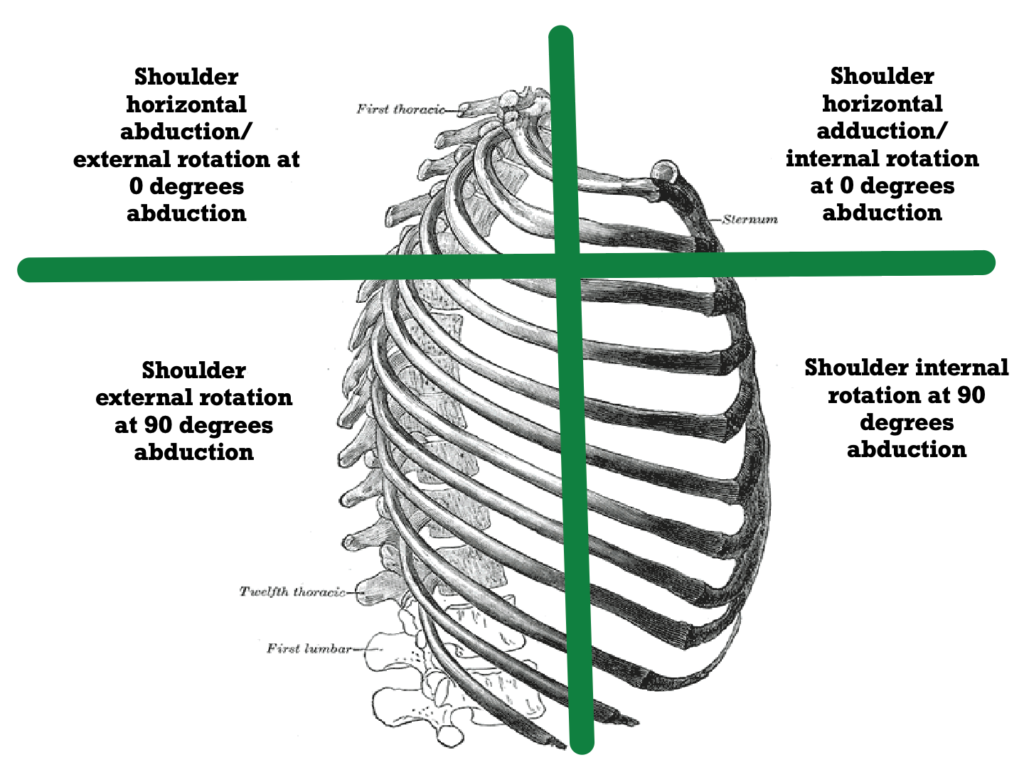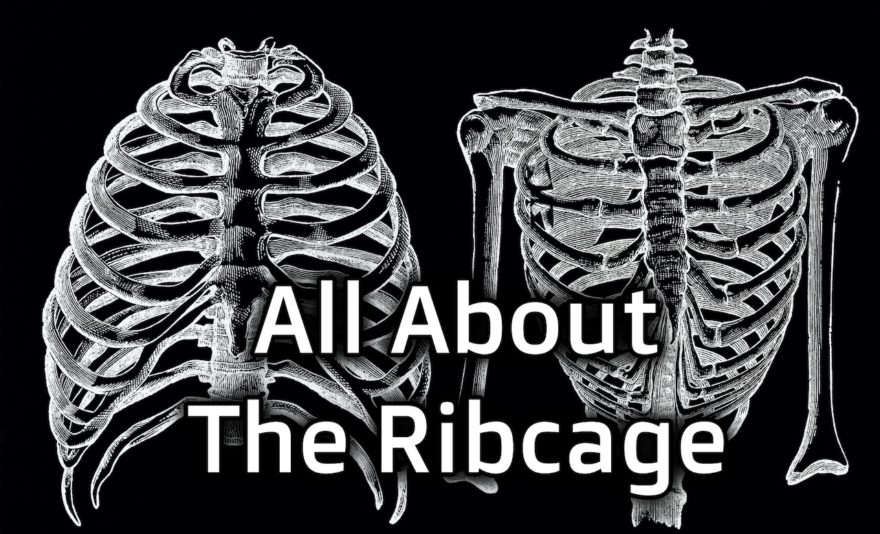Table of Contents
Learn how reaching and improve upper body mobility
Movement Debrief Episode 117 is in the books. Below is a copy of the video for your viewing pleasure, and audio if you can’t stand looking at me. Here is the setlist:
- What order should I prioritize improving ribcage expansion?
- What is the manubriosternal joint?
- What happens when I have mixed compensations at the sternum?
- How can I encourage ribcage dynamics without increasing secondary compensations?
- What visual cues can I look at to see if someone can “stack?”
- What is different about infrasternal angle presentations between 90-110 degrees?
- How do I go about improving these particular infrasternal angle presentations?
- How can thoracic sidebending be useful with improving ribcage dynamics?
If you want to watch these live, add me on Instagram. Enjoy!
and the audio version:

 t
tShow notes
Check out Human Matrix promo video below:
Below are some testimonials for the class:
Want to sign up? Click on the following locations below:
August 1st-2nd, Boston, MA (Early bird ends July 5th at 11:55pm!)
September 12th-13th, Montreal, Canada (Early bird ends August 16th at 11:55pm!) [6 CEUs approved for Athletic Therapists by CATA!]
October 3rd-4th, Ann Arbor, MI (Early bird ends September 6th at 11:55pm!)
November 7th-8th, Charlotte, NC (Early bird ends October 11th at 11:55pm!)
November 21st-22nd, San Diego, CA (Early bird ends October 25th at 11:55pm!)
May 1st-2nd, 2021, Minneapolis, MN (Early bird ends April 4th at 11:55pm!)
Atlanta, GA (POSTPONED DUE TO COVID-19)
Dickinson College in Carlisle PA (POSTPONED DUE TO COVID-19) [Approved for 14 Category A CEUs for athletic trainers]
Or check out this little teaser for Human Matrix home study. Best part is if you attend the live course you’ll get this bad boy for free! (Release date not known yet 🙁 https://www.youtube.com/watch?v=j-gEEiwakSk Here is a signup for my newsletter to get nearly 5 hours and 50 pages of content, access to my free breathing and body mechanics course, a free acute:chronic workload calculator, basketball conditioning program, podcasts, and weekend learning goodies:
[yikes-mailchimp form=”1″ submit=”Get learning goodies and more”]
Infrasternal Angle Compensations and Treatment
Below is a picture of the sternum

Below is a picture of how shoulder testing is specific to various areas of the ribcage

Check out the fiber orientation of the subscapularis below:

and the fiber orientation of infraspinatus and teres minor:

Here is the example exercise of Bill’s for posterior expansion
What areas should I prioritize when improving ribcage dynamics?
Hi Zac, around how long do you recommend for each of the three general steps (improving bucket handle, then pump handle, then posterior expansion) before moving on to the next area if a client is doing the relevant exercises daily or twice a day.
The manubriosternal joint
In one of your movement debriefs about being stuck in a pump handle down position, you mentioned a bent manubriosternal joint. What is that, and how does it happen? How do you test for it? Treatment? I tried to google but didn’t really get anywhere, do you have any links you can share?
Thank you,
Is “the stack” being achieved?
How do you know if you are stacked properly?
Addressing shoulder external rotation limitations
It seems like there is a contradiction behind the concepts of expansion relationships and length-tension relationships and/or muscle “stiffness,” but I figure it is because I am just not grasping something fundamental.
Let’s say a client has a limitation in shoulder external rotation. This would seem to indicate that one causative factor is a lack of posterior expansion, in order to help drive the scapula out of adduction and internal rotation, and restoring a better relationship at the glenohumeral joint.
But, if I were to drive a position of posterior expansion, which usually entails contracting the pectorals in order to compress the anterior chest wall, this might exacerbate stiffness in the pectorals, further limiting external rotation at the glenohumeral joint.
So is it important to concern ourselves with this contradictory dynamic relative to the goals?
It seems like I could construct a similar example with a lack of internal rotation, too.
Is this because breathing is such a ‘meta-system,’ and it affects these muscular relationships more powerfully than contractions ever could, or am I misunderstanding something about these relationships?
Immobile infrasternal angles
I found your point about the individuals with infrasternal angle range between 90 & 110 degrees really interesting because I have not seen this covered before. If you get an opportunity to expand on that group of people in future podcasts that would be great ie what is your approach with them.
Thoracic sidebending
Would you be able to do a question on/answer on how does the pelvis, thorax and neck reposition itself during left and right sidebending (left and right thoracic abduction) and how does inhalation/exhalation work?
Do you have to be in left/right thoracic abduction before the trunk will rotate (via an inhalation of whichever leaflet of the diaphragm is being used to inhale)?
Sum Up
- Focus on addressing restrictions associated with reduced infrasternal angle dynamics first, then superficial compensation
- Spend as much time as needed for a client to learn a task. If your client is diligent, expect to change exercises every 1-3 weeks
- The manubrium is associated with anterior expansion at T2-4, and the sternal body is T6-8. Assess these regions by shoulder horizontal adduction/internal rotation at 0 degrees abduction, and shoulder internal rotation at 90 degrees respectively
- A proper stack is when visually the thorax and pelvic are atop one another
- Reaching without utilizing a superficial compensatory strategy is how to ensure the entire movement system because dynamic when targeting specific areas
- Infrasternal angles between 90 and 110 degrees are utilizing secondary compensation strategies. Redouble your efforts on normal respiration coaching
- Sidebending can be used to improve bucket handle dynamics and is useful to practice before driving rotation
Image by Nicolas Raymond
